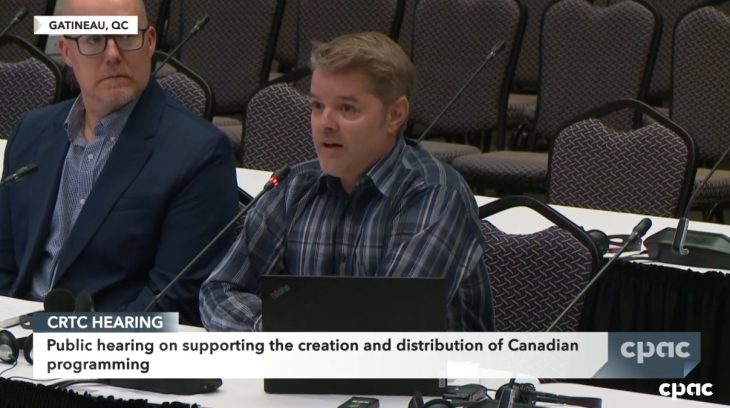
By Ahmad Hathout
The director of media for Canada’s largest private sector union said Tuesday the CRTC could view local news as a service of “exceptional importance,” making it qualify for mandatory distribution, to drive more support for the expensive-to-produce programming.
Such a mandatory distribution could be imposed on online streamers as well, said Unifor’s Randy Kitt, who urged the commission to not let market forces determine the fate of a sector that has seen mass layoffs recently.
“We’ll just lose more jobs, we’ll lose more journalists, we’ll have more news deserts, and our democracy will slip away,” Kitt said about the consequences of not bolstering regulatory mechanisms for local news funding, including from the Independent Local News Fund (ILNF) and Canadian programming expenditures (CPE).
The CRTC has deemed some national news services as programs of exceptional importance, and the regulator is studying what traditional methods of regulation could be adapted for the online streaming world, including mandatory distribution.
Kitt said he also agreed with the suggestion that the CRTC could create a news fund into which only foreign streamers would contribute and, at the same time, impose a 30 per cent CPE requirement on those streamers on top of their existing five per cent base contribution requirement, which the streamers are currently challenging in court.
“I think funds are important for the broadcasters to draw upon those funds in different ways, like the ILNF,” Kitt said, adding the CRTC could also bring back the Local Programming Improvement Fund (LPIF), which was phased out over a decade ago and provided broadcasters funding for local programming in smaller markets.
“Our biggest vertically-integrated broadcasters can’t be expected to lose money on local news, and we can’t expect them to produce it if it’s going to continue to lose money,” Kitt added. “I think CPE requirements are important. There’s been some talk about allowing flexibility on PNI money to be used for local news. It’s not going to be one solution, and it’s not going to be one of those things.
“I think it needs to be all of them in a meaningful way. And that’s sort of how we set up our supports for local news in this country already. We have the ILNF. We have other supports. The government has tax credits … We are working on a culture of philanthropic support, the Online News Act. These are like pieces of the puzzle or a multi-layered support structures.”
Kitt also addressed a recommendation made by Bell that the commission ease its exhibition requirements on providing locally reflective news. “I think there absolutely has to be guideposts,” Kitt said.
“Canadian media is in crisis because we are forced to compete with [foreign] giants, and we were never intended to compete in that arena,” he said in closing. “It is absolutely crucial that the commission ensure that there is a viable business model for all news providers in this country to ensure that Canadians continue to have access to high quality and professional journalism and local news that informs, educates and hold our power structures to account.”
Tuesday was the final day of the CRTC’s hearing into what makes audiovisual programming Canadian, which is part of its implementation of the new Broadcasting Act that was amended by the Online Streaming Act.



